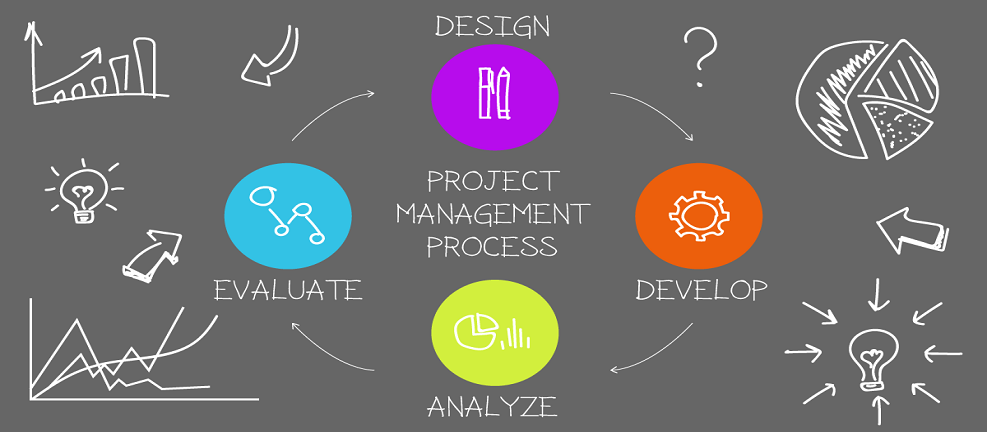Breaking Down Complex IT Projects: A Guide to Simplifying the Complex for IT Leaders

In the world of IT, projects are the backbone of progress. From small-scale applications to enterprise-wide transformations, every IT project involves a unique blend of challenges, teams, and timelines. However, complexity often becomes the biggest obstacle to successful project delivery. IT leaders frequently face projects that seem unmanageable due to their sheer scale, unpredictability, or interdependencies.
How do you transform these complex projects into achievable milestones? By breaking them into simple, manageable tasks. This guide explores strategies, tools, and best practices to simplify even the most intricate IT projects while ensuring efficiency and quality.
Not all difficult projects are complex, and not all complex projects are difficult. Recognizing the difference is essential:
Difficult Projects: These might have tight budgets, stringent deadlines, or high performance demands. While challenging, they are often straightforward in scope.
Complex Projects: These involve uncertainty, ambiguity, numerous moving parts, and multiple stakeholders. They may span various teams, technologies, and timelines, making them unpredictable and intricate.
Complexity is not just a measure of size but also of interconnectedness and variability. Once complexity is identified, the next step is to deconstruct it effectively.
Simplifying complex projects is not about reducing their importance or scope but about:
Enhancing clarity and focus.
Reducing risks and uncertainties.
Improving team collaboration and accountability.
Accelerating project timelines while maintaining quality.
Breaking down a complex project into smaller, manageable tasks is a proven method to achieve these goals.
1. Leverage Modern Project Management Frameworks
Traditional project management techniques often fall short in dealing with complexity. Modern frameworks emphasize:
Iterative Planning: Regularly revisiting and refining project plans.
Agile Methodologies: Encouraging flexibility and adaptive planning.
Cross-Functional Collaboration: Involving stakeholders from different domains to provide diverse perspectives.
2. Use Work Breakdown Structures (WBS)
The WBS is a deliverable-oriented approach to breaking down projects into smaller, more manageable sections. Key considerations when designing a WBS include:
Identifying critical deliverables.
Defining tasks that can be developed in parallel.
Collaborating with the entire project team for input.
Ensuring each task is measurable, with clear time and cost estimates.
3. Adopt Product Breakdown Structures (PBS)
The PBS focuses on analyzing, documenting, and communicating the outcomes of a project. It helps clarify:
The final product or deliverable.
Sub-deliverables that contribute to the final product.
Descriptions and components of each sub-deliverable.
WBS vs. PBS: When to Use Each
While both tools are invaluable, they serve distinct purposes:
Use PBS at the initial stages to define the project’s outcomes.
Use WBS to plan resources, timelines, and tasks effectively.
By combining both tools, you can ensure a comprehensive approach to managing complexity.
1. Define Objectives from Multiple Perspectives
Inside View: Examine the project from a detailed, subjective standpoint. Break down the effort required for each component.
Outside View: Take a holistic approach. Learn from similar projects and gather insights from peers or case studies.
2. Break Projects into Smaller Tasks
Divide the project into meaningful pieces that align with overall objectives. Each task should:
Be achievable within 8-80 hours of work.
Have a clear output and purpose.
Integrate seamlessly with other tasks.
3. Focus on One Task at a Time
Avoid overwhelming teams by concentrating on one task or milestone at a time. This promotes clarity and prevents errors caused by multitasking.
4. Encourage Collaboration
Effective communication is vital. Assign tasks to team members based on expertise and ensure everyone understands their role within the larger context.
5. Celebrate Milestones
Acknowledging and rewarding the completion of smaller tasks motivates teams and builds momentum for tackling subsequent challenges.
Work Breakdown Structure (WBS)
Purpose: Organizes project deliverables into manageable sections.
Benefits: Enhances cost estimation, scheduling, and monitoring.
Product Breakdown Structure (PBS)
Purpose: Focuses on analyzing and documenting project outcomes.
Benefits: Improves clarity about final deliverables and their components.
Agile and Scrum Frameworks
Purpose: Foster iterative development and adaptability.
Benefits: Encourage flexibility and quicker adjustments to project changes.
Project Management Software
Tools like Jira, Trello, and Asana streamline task assignment, tracking, and collaboration, reducing the chaos of complex projects.
A skilled project manager is indispensable for simplifying complexity. They should:
Plan effectively, using tools like WBS and PBS.
Allocate tasks based on team strengths and expertise.
Maintain clear communication channels.
Anticipate risks and proactively mitigate them.
Virtual Delivery Centers (VDCs) revolutionize how complex IT projects are managed. By leveraging remote teams and cutting-edge tools, VDCs simplify the most intricate projects. Here’s how:
Access to Expertise: VDCs provide pre-vetted professionals specialized in diverse technologies and methodologies.
Cost Efficiency: Save up to 70% on project costs by utilizing distributed teams.
Scalability: Adjust team sizes and expertise dynamically based on project phases.
Faster Delivery: With global teams working around the clock, project timelines shrink significantly.
Streamlined Processes: VDCs bring structured methodologies, ensuring consistency and quality.
Partnering with a VDC enables IT leaders to focus on strategic objectives while experts handle the complexities of execution.

For modern telecom enterprises, delivering exceptional QoS is no longer optional—it’s a brand differentiator and a strategic lever for growth. Static provisioning models won’t cut it in a world of hyper-dynamic data usage.